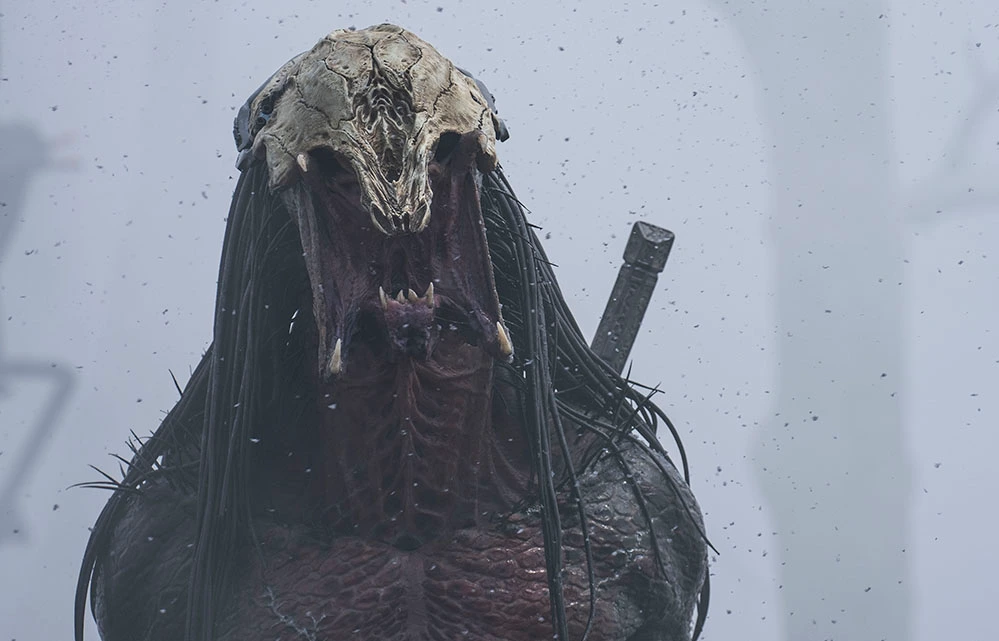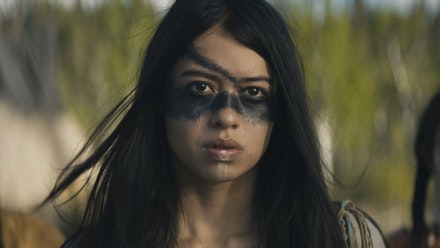Predator was released in 1987 and quickly became one of the most iconic films in history. Trading in a traditional jungle for a concrete one, Predator 2, released in 1990, was a worthy sequel. Since then, four follow up films along with scores of comic books and novels have been released. Though entertaining, none of the films have come close to capturing the action-packed magic of the first two entries. Two Alien vs. Predator films were mired by a choppy plot and two stand alone Predator productions were feeble attempts to reboot the franchise. Writer/Director Dan Trachtenberg (10 Cloverfield Lane) attempts to take the franchise back to its roots with a prequel set in 1700 North America.
Naru, a female Native American, desperately wants to become a hunter instead of a traditional healer/gatherer like the rest of the female members of her tribe. Her brother Taabe recognizes her unique hunting skills but is desperate to keep her from the dangers of the hunt as well as fellow members of her tribe. Naru’s unique senses alert her to a danger that no one on the planet has seen before. She sets out with only her canine companion to uncover the monster that is lurking and stalking in the forest. Once revealed, Naru must harness all of her physical and spiritual strength in order to kill the otherworldly beast and protect her tribe from certain extinction.



PREY is easily the third best entry in the franchise. Simplicity is what made the first two films great, and that is exactly what Trachtenberg does with this film. The story checks all of the classic Predator boxes, while adding some new lore and a fantastic new creature design. An interesting backstory, terrific Predator kill sequences, and stunning cinematography litter the screen. Amber Midthunder puts out a terrific performance with her empathetic yet strong portrayal of Naru, placing her next to icons Schwarzenegger and Glover as franchise leads. Trachtenberg not only sets the film to a more raw native vibe, but also shows the Predator creature to be slightly less evolved than films set in a more modern and futuristic time period. Cinematographer Jeff Cutter gives the audience one breathtaking shot of untouched North America after another, as well as perfectly places the Predator in some fantastically gorgeous settings. PREY gives a consistent perspective of hunter vs. hunted with several terrific set pieces featuring the survival game of wild animals, which at its core, is the entire heartbeat of the Predator franchise. The film is not without a few faults. Originally, the team tinkered with the idea of the film being spoken in the Native Comanche language, but later felt this could turn off viewers just looking for an action filled film, so there was no reason to throw in the occasional Comanche lingo. Though most of the best creature features use a slow burn to build to a reveal, PREY takes a little longer than usual to get the neon blood flowing. Despite these minor errors, once the Predator comes out of the forest to play, the film becomes a blood-soaked terror trip. Will PREY reach immortal status such as the first two Predator films? No. Is this a great step in the right direction towards a template for future entries? Absolutely. With a nod to one of the sequels, and early talk along with great preliminary reviews, we probably have not seen the last Predator film set in this era.
Scream Score: 8.7/10

